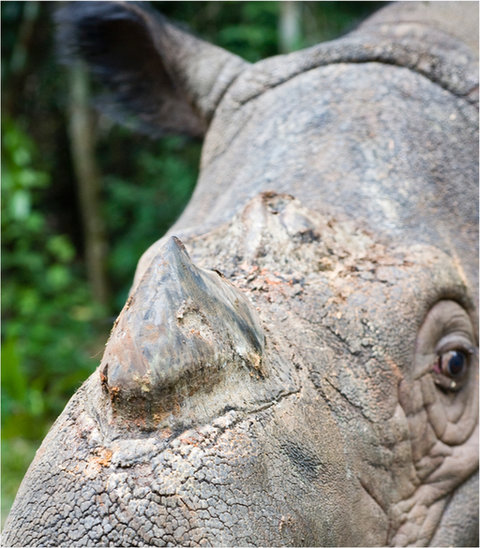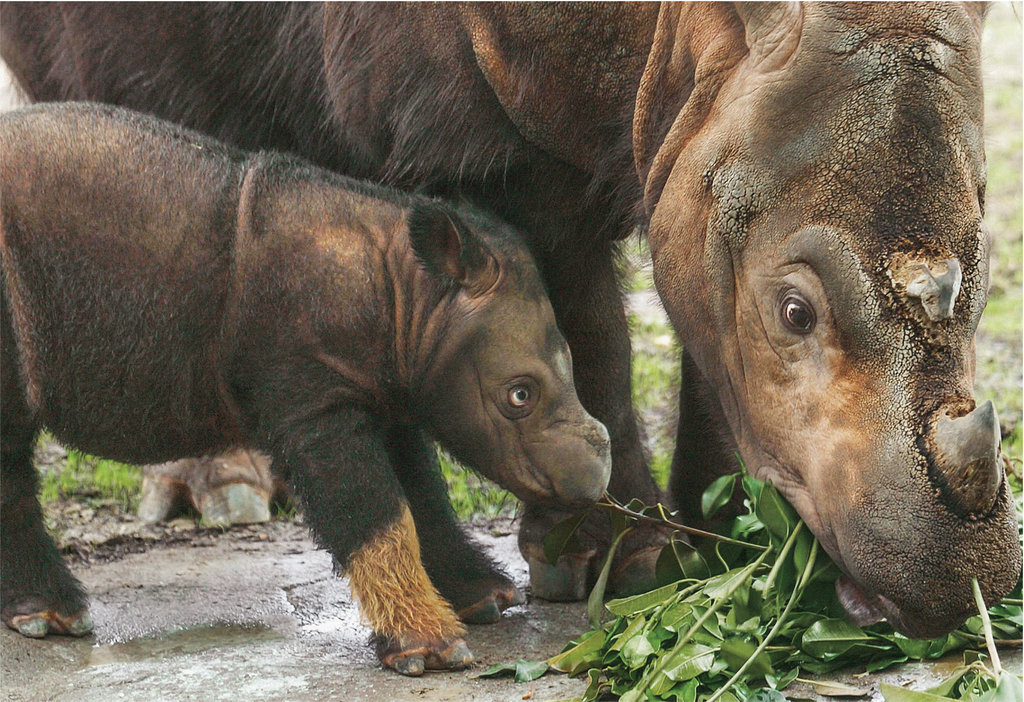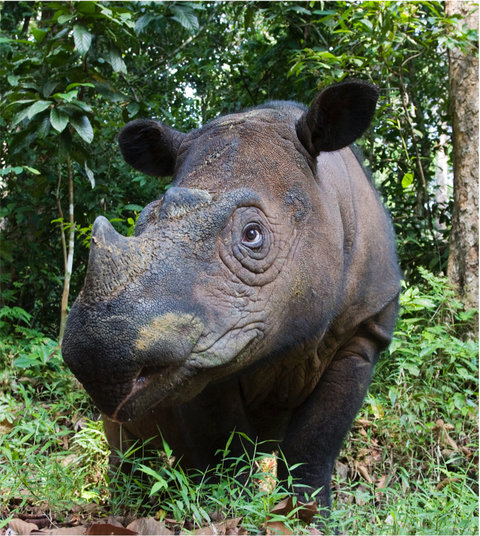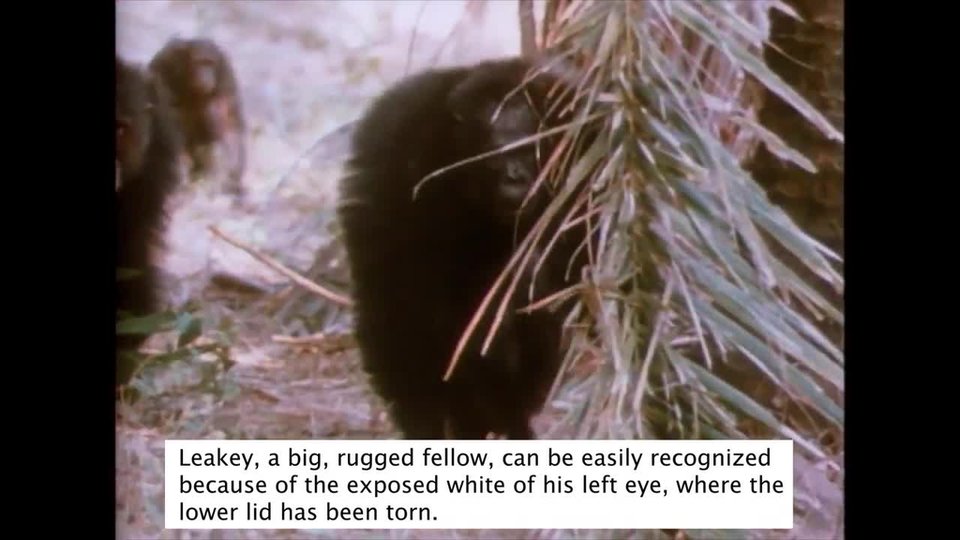
Rhinohornsaremadeofkeratin,thesamematerialfoundinyourhairand fingernails.
RhinosResearch
TheworkofonescientistnamedTerriRothshowedpromise.RothisthevicepresidentofconservationandscienceattheCincinnatiZoo.Sheandherteamdevelopedspecialtechniquesandwaysofhandlingtherhinosthatmadetheireffortsmoresuccessful.In2001,acaptiverhinonamedEmigavebirthtoacalf.TheynamedhimAndalas—anoldIndonesianwordmeaning“Sumatra.”AndalasbecamethefirstSumatranrhinobornincaptivityin112 years.
Today,theSumatranRhinoSanctuary
ishometosevenrhinos—threemalesandfourfemales.Thenewrhino,namedPahu,iscurrentlyatafacilityinBorneo.Shemayonedayjointhe others.

EminibblesonleaveswithherbabyattheCincinnatiZoo, U.S.A.
Pahu’sRescue
VeterinariansfromIndonesia,Malaysia,andAustraliawereonhandtoguidePahuintoacratethatwasthenloadedontoatruck.Heavyrainshadchokedtheroadswithdebris,sothepathforwardwasnotclear.Alocalminingcompanysentabulldozer.Pahuwasfinallygivenapoliceescorttoa sanctuary.
Pahuwillbegiventimetosettlein tohernewhome.Inthemeantime,planscontinuetofindotherrhinosinthewildandgivethemnewhomes,too.TheSumatranRhinoSanctuaryisnearlyfull.So,anewfacilityisbeing built.
Fornow,Pahu’srescuemarksanothermajorstepinrescuingtheSumatranrhino.Theworkisslow,but promising.

Atthesanctuary,eachrhinolivesinitsownsectionof rainforest.
